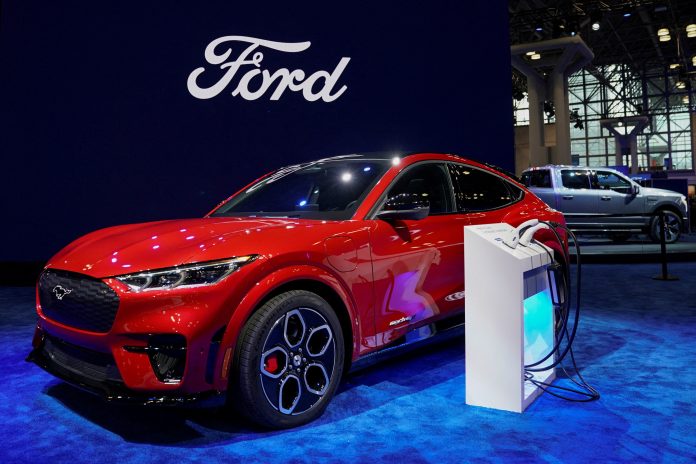Ford’s electric vehicle division faced substantial losses in the first quarter, totaling $1.3 billion, equating to $132,000 for each of the 10,000 vehicles sold during that period. This significant setback contributed to a decline in earnings for the company.
Similar to many other automakers, Ford has announced plans to transition from traditional gas-powered vehicles to electric vehicles in the coming years.
Notably, Ford is the sole traditional automaker to disclose detailed results of its retail EV sales, shedding light on the challenges within the industry.
The EV unit, known as Model E, experienced a 20% decrease in vehicle sales compared to the previous year, with revenue plummeting by 84% to approximately $100 million.

Ford attributed this decline largely to widespread price reductions across the EV market. Consequently, the $1.3 billion loss before interest and taxes (EBIT) underscored the significant financial strain within the Model E unit.
Ford clarified that these losses extend beyond the direct costs of manufacturing and selling vehicles. Substantial investments in research and development for future EV models also contribute to the current losses, with returns expected in the long term.
Looking ahead, Ford anticipates ongoing losses, projecting EBIT losses of $5 billion for the full year within the Model E unit.
Despite intentions to align EV pricing with production costs within the next 12 months, Ford’s CFO John Lawler acknowledged the challenges posed by a prolonged price war in the EV market. Despite efforts to reduce costs, revenue declines outpace these measures.

In 2023, Ford Model E reported a substantial full-year EBIT loss of $4.7 billion, highlighting the ongoing struggle for profitability in the EV segment.
While Model E faces challenges, Ford Pro, specializing in fleet sales, emerged as a profit driver with an impressive EBIT of $3 billion in the quarter.
However, Ford Blue, responsible for consumer sales of gasoline-powered vehicles, reported declining sales and revenue, resulting in a significant drop in EBIT.
Together, Ford Blue and Ford Pro produced roughly the same level of profits as a year earlier. However, increased losses within the Model E unit led to a 20% decline in Ford’s net income, with adjusted earnings per share falling to 49 cents, slightly better than analyst forecasts.

In contrast, Ford’s rivals, General Motors and Stellantis, are progressing toward profitability in their respective EV businesses.
Meanwhile, Tesla, the world’s largest EV maker, reported a 48% plunge in adjusted earnings and a 9% decline in revenue in the first quarter, signaling broader challenges within the EV sector.
